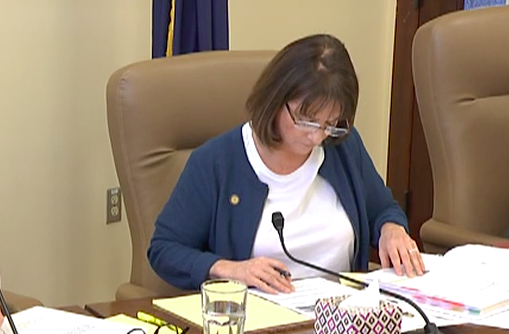In July, Mayor Ethan Berkowitz hired Heather Harris as the new director of the Anchorage Health Department.
Then-Director Natasha Pineda had wanted to leave for months, and finally resigned for personal reasons.
Harris slipped into the spot at the end of August without a question from the media about her qualifications and has been advising the mayor (now interim Mayor Austin Quinn-Davidson, after Berkowitz’ hasty and embarrassing departure in October), and the Anchorage School District on matters relating to business openings and closures, schools, masks, distancing, testing, and more.
Harris, originally from Homer, has no background in health, although she has a management background and an Executive Masters in Public Administration degree.
“Heather brings new energy to AHD at a critical time,” said Mayor Berkowitz at the time. “I have full confidence in her natural leadership and strong public health background to guide the Department through this pandemic, while at the same time ensuring that it fulfills its many responsibilities. I look forward to working with her.”
In fact, she also has no public health management background. Her LinkedIn resume shows that she was the CEO of Big Brothers Big Sisters and a consultant at the Foraker Group, a group funded and controlled by the Rasmuson Foundation.
Before that, she was the executive director of Alaska Youth Advocates and the Alaska Youth and Parent Foundation. She worked at Standing Together Against Rape and has a bachelor’s degree in human services from University of Alaska Anchorage.
Harris has management skills, in her resume, at least. But the job of health director during the second worst pandemic in American history would suggest that actual training in health or public health would be a requirement for the job. Her predecessor, Pineda, has a Masters in Public Health. She is now working at Providence.
In fact, the job description makes it clear that the director “assures that the delivery of public health services are evidence-based and/or best practices, and build the scientific basis of public health.”
The description goes on to say that the director “collaborates in the development of evidence-based public health practices and programs in collaboration with universities, other health agencies, businesses, trade associations, other staff and the public. Oversees in development, implementation and evaluation of programs and activities for individuals, families and population groups that promote health and prevent disease. Responsible for communicable disease follow-up: Assures that assigned staff makes appropriate recommendations to clients and other professionals regarding control of specific diseases and follows up on health hazard complaints as described in the MOA code and state statues.”
Read the entire job description at this link:
There are several other parts of the job description that indicate the importance of a health management background, such as Item E, where it indicates she is the “on call public health staff for after hours..”

“Heather brings new energy to AHD at a critical time,” said Mayor Berkowitz last July. “I have full confidence in her natural leadership and strong public health background to guide the Department through this pandemic, while at the same time ensuring that it fulfills its many responsibilities. I look forward to working with her.”
The department is responsible for many services for Anchorage, which has 38 percent of the state’s population within its borders. It has divisions for affordable housing, aging and disability, air quality, animal care and control, public health, domestic violence, emergency utility assistance, emergency preparedness, and the homeless public safety patrol, among others.
Many business leaders in Anchorage have bristled at the numerous closures of businesses over the past year, and parents have complained to the school district about the ill-effects of school closures on families, children, and their school work.
Anchorage is currently under Emergency Order 18, which limits indoor gatherings, mandates mask wearing, and limits bar capacity to 50 percent.







